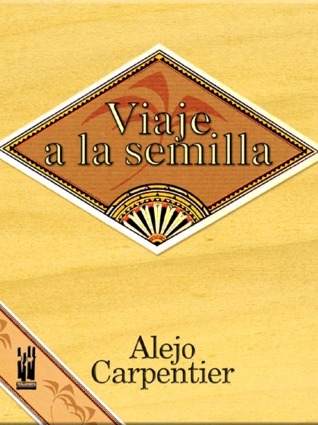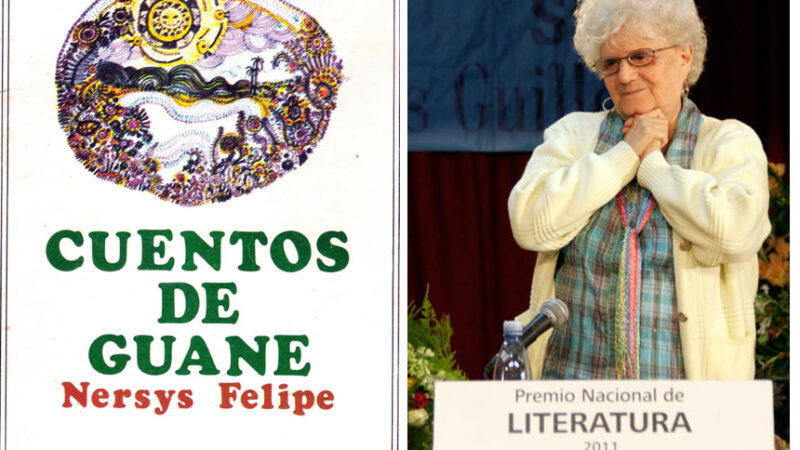Alejo Carpentier and the seed of identity

In 1944, after more than a decade of not publishing, Alejo Carpentier offered an edition of one hundred copies of Viaje a la semilla. Written two years earlier in about three hours in a single sitting, the work was crucial in consolidating the writer’s style and imagination. As Sergio Chaple says: «(…) it inaugurates, within his narrative, a cycle of works in which experimentation with time and musical elements will be a constant». It is also a tribute to Cuban painting, especially that of Amelia Peláez.
The work, which he considered to be his first complete work of fiction, was included in the volume Guerra del tiempo, which also contained the novel El acoso and the short stories Semejante a la noche and El camino de Santiago, although in later editions the novel was omitted and the short stories Los fugitivos and Los advertidos were added.
In Viaje a la semilla, the game with time and the allusions it contains are one of the jewels in the crown of this author, who is also known for works such as El siglo de las luces, Los pasos perdidos and El recurso del método, and who is renowned for his exquisite prose, his construction and the juxtaposition of spaces.
In this sense, the imprint of the analysis of Latin American identity and its artistic expression was crucial to understanding a reflection developed in tune with the influences of Surrealism and the consequent (though not imposed) distancing from that artistic movement.
For the Cuban researchers Andrés Oscar Lora and Roberto Garcés González, the marvellous real is the result of a maturation that took place before 1949, the year in which Alejo published El reino de este mundo: «Carpentier had an early vision of America and its future, based on his need to know its history and the influence of Martí’s thought. The idea of the marvellous real is presented in him from a logical and theoretical perspective which seeks to establish historically the characteristics of the continental sphere by showing the most visible of these relations of singular contexts and palpable conjunctions.»
As these authors point out, in this reflection the commitment to the rescue, defence and universality of the cultural heritage of the continent was finally enshrined in the theory of value, as the writer Leonardo Padura Fuentes expressed: «(…) contrary to the overwhelming majority of more or less established critics, to what extent the marvellous real was an evolving concept, to what extent it was a Latin American reality and at the same time an aesthetic to reflect it.»
In this respect, many researchers have focused on Alejo’s opposition to surrealism. It should be noted, however, that this position did not deny European culture, but rather created the basis for expressing the cultural identity of this side of the world on the basis of its constituent elements.
The baroque, self-conscious language, loaded with metaphors and meanings, was the way in which this work was developed. Unlike surrealism, the extraordinary was not to be found artificially: it was in reality itself. With this approach, as Professor Juan Antonio Rosado points out, Carpentier also criticised the realist or thesis novel, the sleight of hand and the mimetic aspirations of its proponents:
«(…) it participates in a tendency called culturalism, which consists in including elements of culture in narratives, from literature itself to music, architecture, painting and other phenomena, on the basis of quotations, references, allusions, serious or ironic evocations. Many first-time writers do not try this very well: their works seem stiff. In Carpentier’s case, however, it is not only natural but also very balanced: there is nothing gratuitous.

In Viaje a la semilla we witness the life of Don Marcial, the protagonist of the story, from the moment of his death to the moment of his birth: «In a most interesting development, whose literary precedents, carefully traced, do not detract from the originality of the author, who cannot be denied praise for this little masterpiece. A hasty first reading might suggest a literary game, but on closer inspection, the now classic interweaving of motifs in the story allows us to grasp the implicit condemnation of a class, exemplified in the sterile life of this Marquis of Capellanías», notes Sergio Chaple.
Such a journey, sometimes self-referential and aware of its own aspirations, gives us some of the clues present in other novels and essays. In them, the presence of the Caribbean, its music and culture, defines a whole with its own identity within the narrative. As the scholar Roberto González Echevarría notes:
«What was Carpentier’s nationality? From a literary point of view, undoubtedly Cuban, largely by choice, vocation and discipline. Few knew Cuban history, literature and culture as well as he did, and only two or three writers born on the island have reached his level. But Carpentier’s most important nationality is that of a universal writer, because his works are part of a tradition that begins with the Bible and Homer and continues through Cervantes, Shakespeare, Flaubert and Joyce to the present day.
For the critic Harold Bloom, Alejo was one of the founders of 20th-century Latin American literature. Drawing from reality and its orchestral array of possibilities and experiences, the seeds of Latin American identity he sowed continue to defy the hyperbole of fiction.
Translated by Luis E. Amador Dominguez



